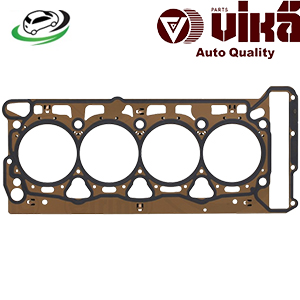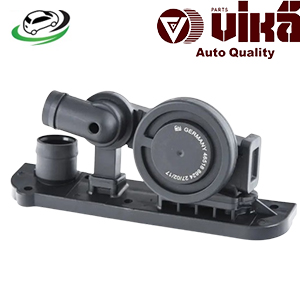-8%
Get AUDI A3 8P 2.0T/ B7 A4 2.0T/ B7 A4 Quattro 2.0T / VW Golf R 2.0T/ Passat B6 2.0T Pressure Control Valve 06F129101N
A pressure control valve is a device designed to regulate and manage the pressure within a given system by either restricting or allowing the flow of gases or fluids. Its primary role is to maintain the desired pressure, reduce the risk of overpressure or underpressure, and safeguard system integrity.
In automotive systems, for example, pressure control valves are found in engine fuel systems, turbochargers, and hydraulic circuits, where they ensure consistent pressure and prevent malfunctions. In industrial and mechanical applications, these valves protect equipment from damage caused by fluctuating pressure or excessive force.
Pressure control valves can be automatic, manually operated, or electronically controlled, depending on the system’s complexity and requirements.
2. Functions of a Pressure Control Valve
The pressure control valve performs several critical functions, depending on the application and the type of valve used. Here are the primary functions of a pressure control valve:
- Pressure Regulation: The most basic function of a pressure control valve is to regulate pressure within a system to maintain it at a set level. This is critical in systems where varying fluid or gas pressures can cause damage or reduced performance.
- Overpressure Protection: Pressure control valves are often designed to protect systems from overpressure conditions, which can cause explosions, equipment failure, and other dangerous outcomes. When pressure exceeds a safe threshold, the valve opens to relieve pressure, ensuring safety.
- Pressure Reduction: In some systems, the pressure control valve reduces incoming pressure to a lower level to ensure that downstream components are not exposed to excessive pressure. For example, a pressure control valve in a water supply system reduces pressure to protect plumbing and fixtures.
- Pressure Maintenance: The valve ensures that pressure remains stable in systems where fluctuations could lead to performance issues. In engine fuel systems, for example, maintaining a constant pressure ensures optimal fuel delivery for efficient combustion.
- Flow Control: In systems like hydraulic or pneumatic circuits, the pressure control valve also controls the flow rate of fluids or gases by adjusting the pressure, ensuring proper operation of actuators and motors.
- Emergency Shutoff: Some pressure control valves act as safety devices by shutting off the flow completely in case of extreme overpressure conditions. These valves can be crucial in industrial applications where pressure spikes can have catastrophic consequences.
3. Types of Pressure Control Valves
There are several types of pressure control valves, each designed to serve specific functions and applications. Some of the most common types include:
- Pressure Relief Valve (PRV): This valve opens when the system pressure exceeds a predetermined setpoint, allowing excess pressure to escape and preventing damage to equipment or safety hazards. It is commonly used in hydraulic systems, steam boilers, and gas pipelines.
- Pressure Reducing Valve: This type of valve reduces incoming pressure to a lower, more manageable level for downstream equipment or processes. It is commonly used in water supply systems, air compressors, and fuel delivery systems.
- Back Pressure Regulating Valve: A back pressure regulator maintains a consistent pressure upstream of the valve by releasing excess pressure. It is commonly used in fuel systems, chemical processing, and steam applications.
- Pilot-Operated Pressure Control Valve: These valves use an external pilot valve to control pressure, providing more precise and stable pressure regulation. They are commonly found in high-pressure applications, such as industrial hydraulic systems.
- Proportional Pressure Control Valve: These valves adjust the pressure in a system based on an electrical signal, allowing for more precise control. They are commonly used in systems where pressure must be continuously modulated based on varying operating conditions.
4. Benefits of a Pressure Control Valve
A properly functioning pressure control valve offers numerous benefits for the system in which it operates, as well as for overall safety, performance, and efficiency. Here are the key advantages of using pressure control valves:
- Enhanced System Efficiency: Pressure control valves ensure that systems operate within their optimal pressure range, leading to better performance and reduced energy consumption. For example, in a hydraulic system, proper pressure regulation ensures that actuators operate efficiently, without wasting energy.
- Protection from Overpressure: One of the most critical benefits of pressure control valves is their ability to prevent overpressure conditions, which can lead to equipment failure, explosions, or damage to components. In industrial systems, this protection is essential for maintaining safety and avoiding costly downtime.
- Prolonged Equipment Lifespan: By maintaining consistent pressure levels, pressure control valves reduce the strain on components like pumps, pipes, and actuators, thus prolonging their lifespan. Without pressure regulation, fluctuating or excessive pressure can cause wear and tear or even catastrophic failure.
- Improved Process Control: Pressure control valves allow operators to fine-tune pressure levels to meet specific requirements for various processes. This is especially important in industries like manufacturing, chemical processing, and food production, where precise control is needed to ensure product quality and process efficiency.
- Energy Savings: Proper pressure regulation can lead to significant energy savings by preventing overworking of pumps and compressors. In hydraulic and pneumatic systems, reduced pressure loss results in lower energy consumption and operational costs.
- Reduced Risk of Leaks: Overpressure conditions can cause pipes, seals, and other system components to fail, resulting in leaks that can be hazardous and costly. Pressure control valves reduce the likelihood of leaks by maintaining safe pressure levels throughout the system.
5. Common Problems with Pressure Control Valves
Like any mechanical component, pressure control valves are susceptible to wear, malfunction, and failure. Some of the most common problems associated with pressure control valves include:
- Valve Sticking or Jamming: Over time, contaminants like dirt, oil, or debris can accumulate inside the valve, causing it to stick or jam. This can prevent the valve from opening or closing properly, leading to pressure imbalances or overpressure conditions.
- Leakage: Worn-out seals, gaskets, or damaged valve components can result in leaks, which reduce the valve’s ability to regulate pressure effectively. In hydraulic or pneumatic systems, leaks can lead to decreased performance and energy loss.
- Pressure Setpoint Drift: Over time, the pressure setpoint of the valve can drift due to wear or improper calibration. This can result in the valve not opening or closing at the desired pressure, compromising system performance.
- Corrosion or Wear: In harsh environments or systems that handle corrosive fluids, the valve’s internal components may corrode or wear out over time. Corrosion can compromise the valve’s ability to regulate pressure and may lead to complete valve failure.
- Pilot Valve Malfunction: In pilot-operated pressure control valves, a malfunctioning pilot valve can prevent the main valve from operating correctly. This can result in either insufficient or excessive pressure regulation.
6. Symptoms of a Failing Pressure Control Valve
Several symptoms may indicate that a pressure control valve is failing or malfunctioning. These include:
- Inconsistent Pressure: Fluctuations in system pressure, either too high or too low, are often signs of a faulty pressure control valve.
- Excessive Noise: A malfunctioning valve may produce unusual noises, such as banging, hissing, or whistling, due to improper flow control or pressure imbalances.
- System Leaks: Visible leaks in the system or a noticeable drop in pressure may indicate that the valve’s seals or components have worn out.
- Equipment Failure: Frequent equipment breakdowns, overheating, or inefficiency may result from a pressure control valve that is not maintaining the correct pressure.
7. Maintenance and Replacement of Pressure Control Valves
Proper maintenance is essential to ensure the longevity and performance of pressure control valves. Here are some key maintenance tips:
- Regular Inspection: Inspect the valve and its components regularly for signs of wear, corrosion, or leaks. Catching these issues early can prevent costly repairs or downtime.
- Cleaning: Regularly clean the valve’s internal components to prevent the buildup of contaminants that can cause sticking or jamming.
- Calibration: Ensure that the valve’s pressure setpoints are calibrated correctly to maintain optimal system performance.
- Seal and Gasket Replacement: Replace worn-out seals and gaskets as part of routine maintenance to prevent leaks and pressure loss.
- Monitoring for Performance Issues: Pay attention to changes in system performance, such as pressure fluctuations or noise, which may indicate a failing pressure control valve.
8. Conclusion
The pressure control valve is a crucial component in both automotive and industrial systems, responsible for regulating pressure, ensuring safety, and optimizing performance. By maintaining proper pressure levels, preventing overpressure conditions, and protecting equipment from damage, pressure control valves play an essential role in ensuring system efficiency and longevity. Regular maintenance, timely replacements, and understanding common issues can keep pressure control valves functioning at their best, contributing to safer and more reliable operations.
Follow us on Facebook for more parts.




Reviews
Clear filtersThere are no reviews yet.